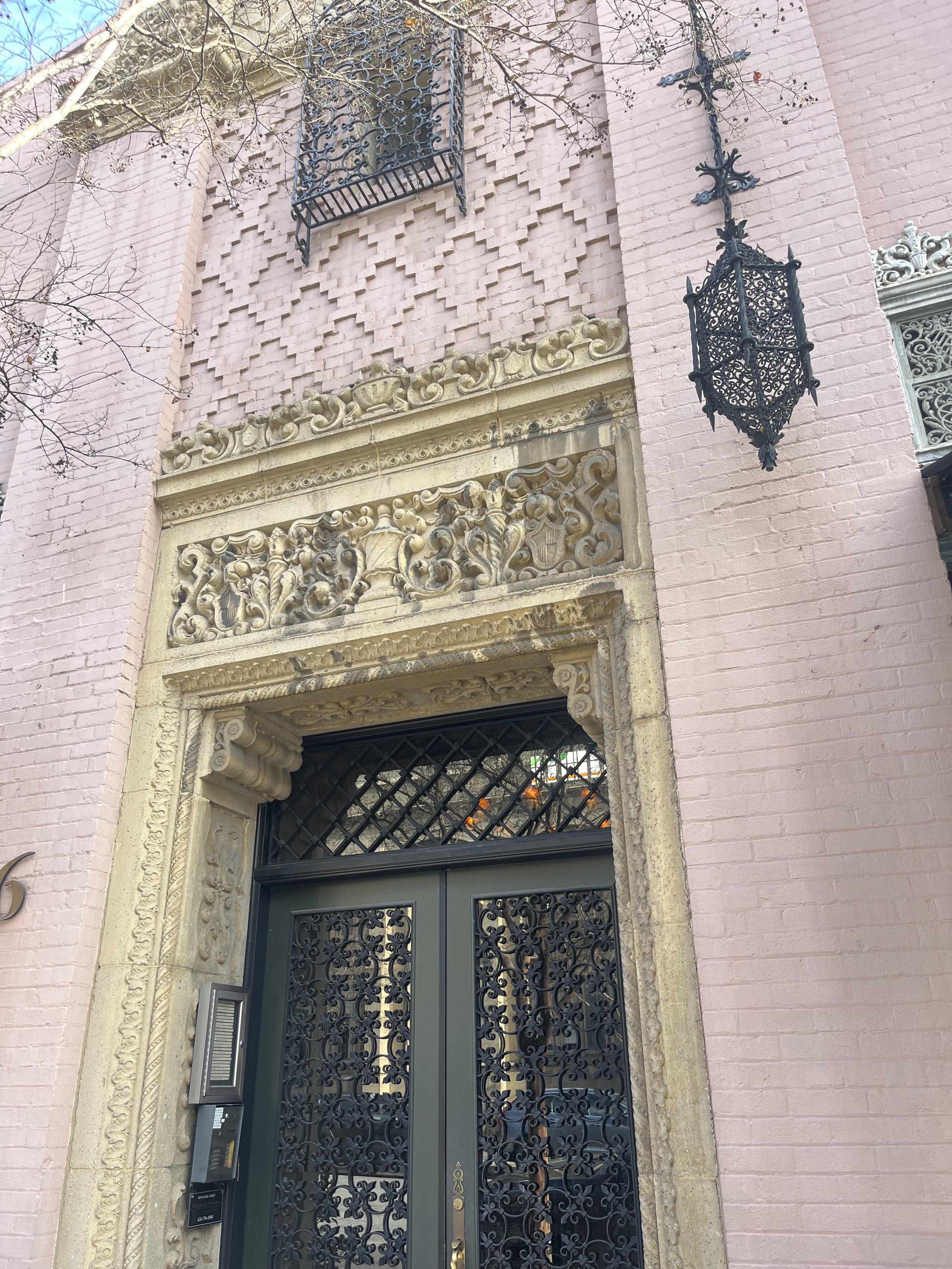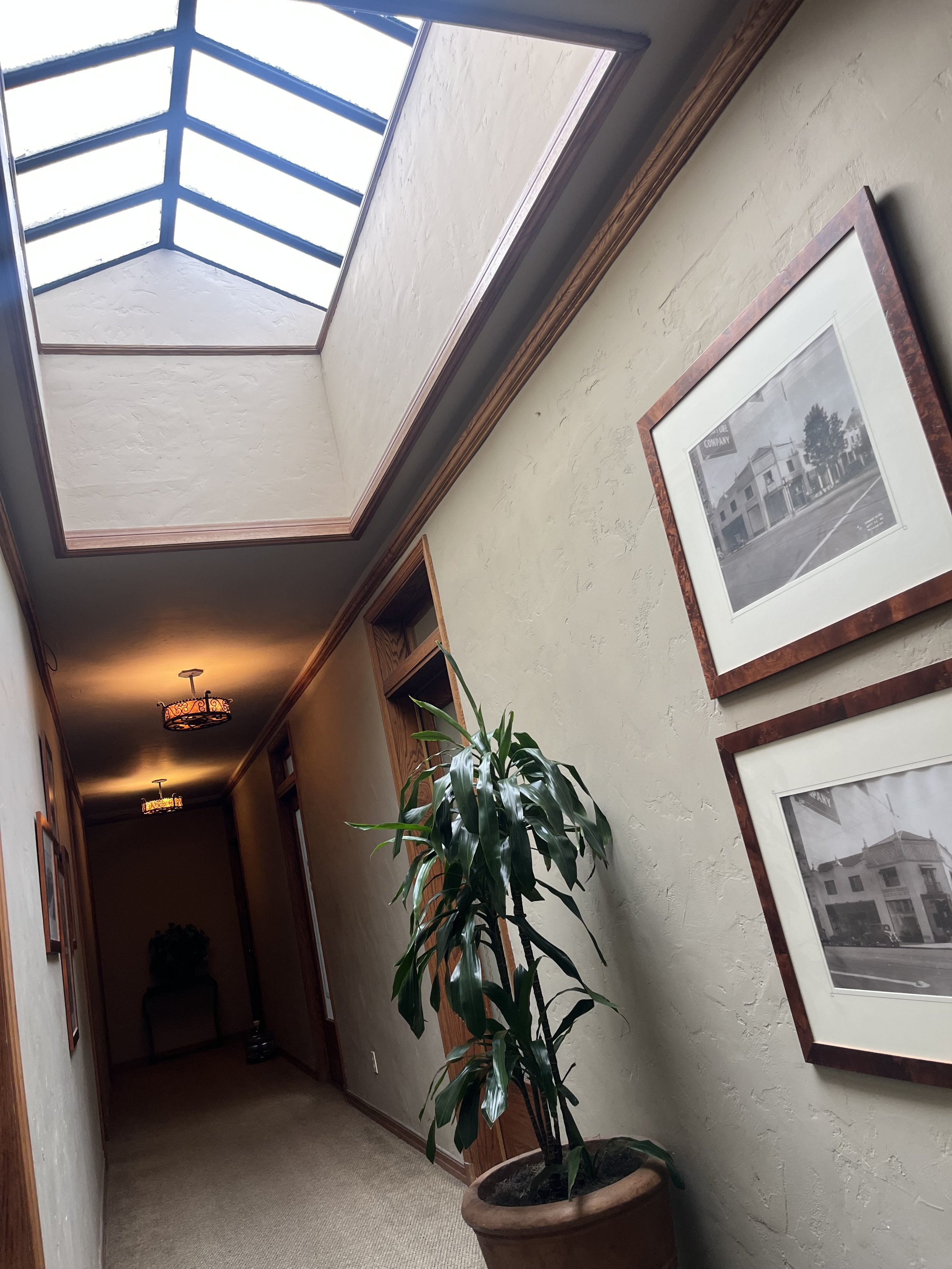I am fortunate to have found a classic psychoanalytic office space in the historic Singer Building and I’m excited to share this fascinating history with you. It’s currently very popular for folks to receive therapy online and while I do provide this option, I believe the experience of coming to your therapy office can be meaningful. Taking the time to go in person can add enriching layers to the work you are doing. Especially with so much to explore in the Pasadena Playhouse district where I am located, I hope this brief history page adds to your overall experience of coming to see me.
The Singer Building was built in 1926 in the popular Spanish Colonial Revival style of that era. The architecture also includes elements of Mexican Baroque around the doors and windows. The architect was Everett Phipps Babcock and this building is his only existing non-residential project as he passed away two years later. In 1984 it was fully restored and listed in the National Register of Historic Places.
The Singer Building was built as a showroom by the Singer Sewing Machine Company. Based out of New York City, this building was one of around 50 locations on the west coast where people could buy the famous sewing machines. The bottom floor was a showroom for Singer and the upper floor (where I am located) has a separate entrance on 16 S Oakland Ave for administrative office spaces. The Singer Company moved out in the 70’s and there was a period where the building was empty, then restored. In the early 80’s, a psychoanalyst by the name of Dr. Donald Bosch moved into office 211 and remodeled this office in the traditional psychoanalytic style.
Sources: https://theclio.com/entry/172209
https://hdl.huntington.org/digital/collection/p15150coll2/id/2595
The Singer Building, Pasadena




Office 211 still lists Dr. Bosch’s name but this is my office as well now (you are in the right place!).
In the early 80’s when Dr. Bosch moved in, psychoanalysis was a very popular style of psychotherapy. Psychoanalysis is a therapeutic method and movement in psychology developed by Dr. Sigmund Freud in the 1890’s. Part of the experience of visiting a psychoanalytic office is to have complete privacy, where ideally patients do not even encounter one another and can remain completely anonymous throughout their visit. Dr. Bosch accomplishes this in his remodel of the office by adding a private waiting room within the suite with a door to enter the therapy office. He doubled the door to add sound proofing. Once the patient is finished with their meeting, they exit through a separate door that bypasses the waiting room and takes them back to the hallway. This unique style of office is meant to add to the experience of safety and privacy in the therapy.




